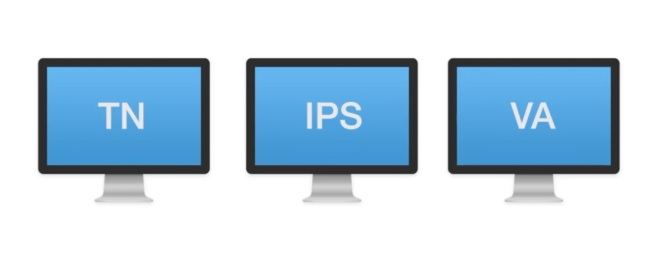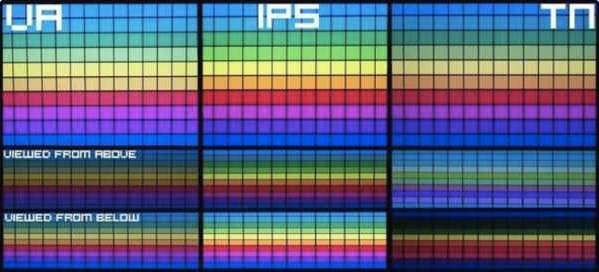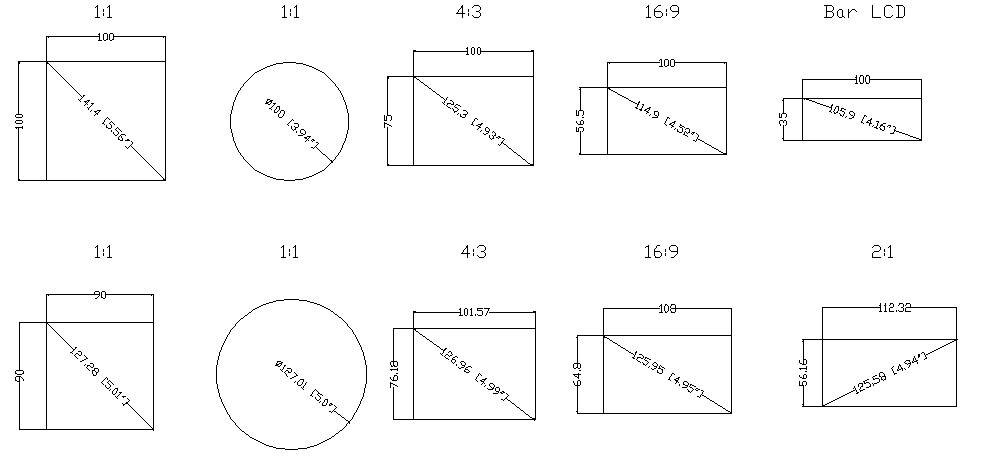How to Selection TFT LCD display
With the rapid development of the display industry, after nearly 30 years of development, TFT LCD has become more and more mature and has more and more choices. The following "Deruxi" will explain for you, hoping to be helpful to you.
1>Make clear what type of TFT LCD you need.
With the same size, different types and different prices, TFT LCD mainly has TN (twisted nematic), IPS (in plane switching), VA (vertical alignment multi quadrant vertical alignment), transflective and other modes. The first two are relatively common.

TN panel is a common soft screen earlier. It can press the water ripple by hand. It is one of the earlier LCD panels and is also widely used at present because of its mature technology and low cost. In contrast, the defects of TN panel are also obvious. The output gray scale is small, the picture color is white, the visual angle is small, and the display effect is general. There will be color deviation and brightness difference when viewed from different angles.
The IPS panel is hard. Touch the screen with your finger and the screen will not deform. IPS screen is much better than TN panel in color display and visual angle. It also has a bright performance in color presentation range and accuracy. Wide viewing angle is the original advantage of IPS panel. No matter which viewing angle will not produce color deviation. At present, most professional screens related to image processing use IPS panel. In addition, although IPS screen is slightly inferior to TN screen in response time, IPS still has a high market share thanks to the excellent color performance of IPS screen.
It should be noted that in order to avoid the patent name of IPS, major panel manufacturers have different titles, such as:
| Brand | Full viewing angle technology of different brands | Noun interpretation |
| LG | IPS | In-Plane Switching |
| Tianma | SFT | Super-Fine TFT |
| Innolux | AAS | Azimuthal Anchoring Switch |
| BOE | ADS | Advanced Dimension Switch |
| AUO | AVHA | Advanced Hyper-Viewing Angle |
| Hannstar | IPS pro | In-Plane Switching Pro |
| ... | .... | .... |
VA panel also belongs to soft screen. VA panel is a panel type widely used in medium and high-end LCD. Fujitsu, Samsung, Chimei electronics, AUO and other panel enterprises have adopted this panel technology. The VA screen is characterized by higher tolerance and contrast, which can reach a high contrast of 3000:1. The black and white in the picture are more pure, and there will be no light leakage and other problems. However, the ordinary quality VA panel is not brighter than the IPS display effect, and the price of high-end quality VA panel is also quite expensive.

2> Selection the size for the LCD panel
The size of the LCD panel is defined by the diagonal size of the display area. Therefore, its aspect ratio is more important. Let's look at the following picture to make it clear:

Above: when the length of each LCD is the same and 100, their diagonal dimensions vary greatly due to different widths, so the diagonal dimensions are different between 3.9 "- 5.6".
Figure below: Although the length width ratio of each LCD is different, the diagonal size is close, which is about 127. Finally, the size of these displays can be called 5.0-inch LCD.
Therefore, we can not generally call it a few inch screen. The shape of the display screen with the same size may be different, and the length width ratio and shape of the display area may be different, which will mislead your product selection.
In addition, the size and shape of LCD are greatly limited. Not all sizes and shapes are ready-made. It is basically based on the specifications that have been delivered on the existing market. If you need to customize TFT LCD requires certain MOQ requirements, and the mold cost is also expensive. If you have specific needs, you can communicate with our business professional in Deruxi.
3>Selection the interface for LCD screen
Common LCD interfaces include SPI, MCU, RGB (TTL), LVDS, EDP, Mipi, etc. You need to confirm what type of interface your motherboard scheme supports, and then match it with the LCD. In addition, through the switching scheme, these interfaces can convert signals to each other. In consideration of stability and cost, unless the LCD native interface meeting your requirements does not support it, it is generally not recommended to adopt the scheme of signal conversion, which will incur additional cost and easily generate additional signal interference. Of course, for the device terminal, LCD can provide a standardized screen interface is the most ideal scheme, such as HDMI, VGA, AV output, etc. we can also provide a similar driver board scheme.
4>Working environment
TFTs have the Different operating temperatures. The grades of LCD screens can be divided into military grade, automotive grade, industrial grade and commercial grade in several fields.
| Product classification | Operating Temperature |
| Military Grade | -40~90℃ |
| Automotive Grade (Preassembled) | -40~85℃ |
| Automotive Grade (Retrofitting) | -30~80℃ |
| Industrial Grade (Bad environment) | -30~80℃ |
| Industrial Grade (Common environment ) | -20~70℃ |
| Commercial Grade (Out door) | -20~60℃ |
| Commercial Grade (In door) | 0~50℃ |
*Similar products with different application fields have different working temperatures. If the working temperature is different, there are great differences in the design, material and structure of LCD. The intuitive feeling is that the price is very different.
5>Selection of LCD display brightness:
Brightness refers to the luminance for the LCD module . The unit is CD / m2 or nits. It is the candlelight brightness per m2, that is, the light intensity per unit area.
First of all, we introduce several LCD screens that we usually contact more, and take their brightness as a reference, which is more conceptual.
For example:
Our computer monitors and TV sets generally have a brightness of 200-250cd / m2;
Our mobile phones generally have a brightness of 400-500cd / m2;
The brightness of the central control display screen of our car (the original screen) is generally 800-1000cd / m2.
With these references, we have a certain concept when choosing LCD. For example, for some indoor applications, such as medical products, white appliances and indoor instruments, their brightness can be selected at 200-300cd / m2; For those that need to be used outdoors occasionally, such as handheld terminals and mobile POS, their brightness should be 500-800cd / m2. For those that need to be used outdoors for a long time, such as vehicle screen, fuel dispenser and outdoor instrument, their brightness should be 800-1000cd / m2.
Of course, the brightness can be increased, but also consider the heat dissipation performance of the LCD, otherwise it will have a great impact on its service life. Several LCD brands we agent have very good design skills.such as AUO, Innolux, Tianma, Hannstar, BOE, Disea, CHIMEI etc. The heat dissipation performance and overall service life of high brightness products are very good.
Let's talk about the design and selection of viewing angle, contrast, color, reliability, ESD, EMI, EMC, etc.next time.
